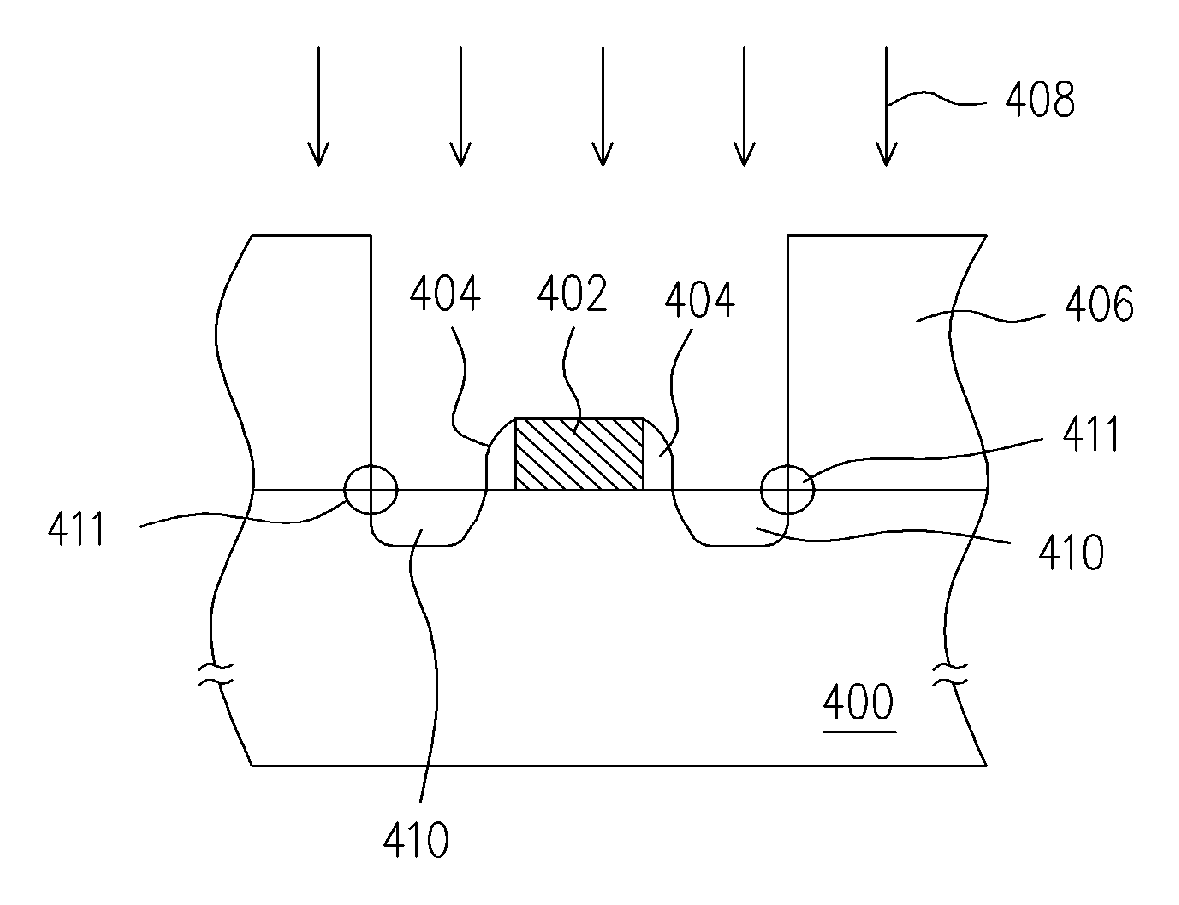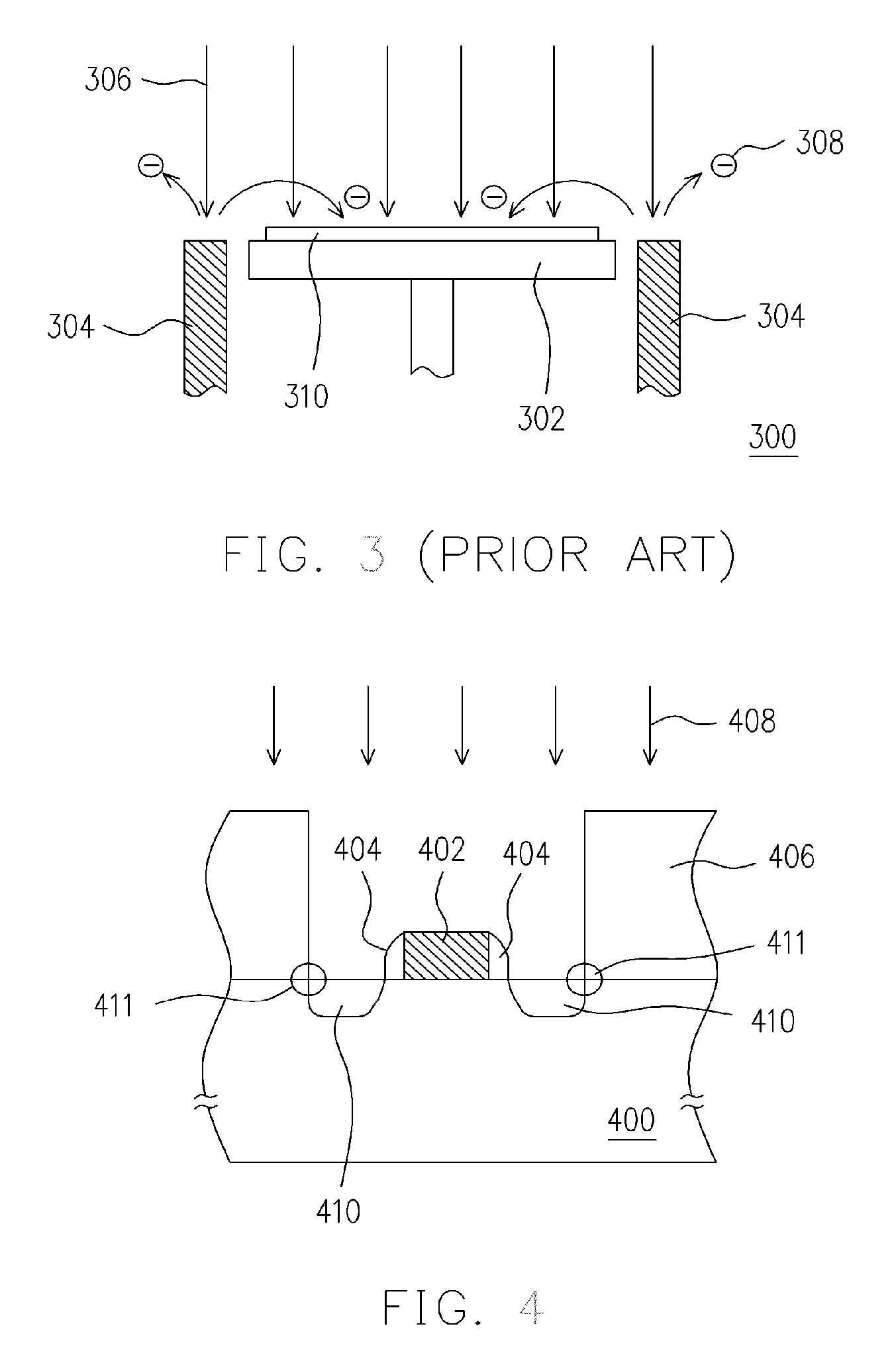Method for reducing positive charges accumulated on chips during ion implantation
a technology of ion implantation and positive charges, which is applied in the direction of semiconductor devices, electrical equipment, basic electric elements, etc., can solve the problem that the production of electrons is not sufficient to completely neutralize the accumulated positive charges, and achieve the effect of alleviating the volcano effects of accumulated charges
- Summary
- Abstract
- Description
- Claims
- Application Information
AI Technical Summary
Benefits of technology
Problems solved by technology
Method used
Image
Examples
Embodiment Construction
[0022] Reference will now be made in detail to the present preferred embodiments of the invention, examples of which are illustrated in the accompanying drawings. Wherever possible, the same reference numbers are used in the drawings and the description to refer to the same or like parts.
[0023]FIG. 4 is a cross-sectional view of a MOS transistor during the ion implantation process according to one preferred embodiment of this invention. The MOS transistor includes a gate 402 and spacers 404 formed on a substrate 400. The substrate 400 may further include other electronic components and will not be depicted in the figure. A conductive photoresist pattern 406 is formed over the substrate 400 and exposes a portion of the substrate 400. The material of the conductive photoresist pattern 406 includes at least a conductive resin, a solvent and a selectively photosensitive material. The conductive resin can be 3-hexylthiophene-3-thiophene-ethane methacrylate copolymer, for example. The so...
PUM
 Login to View More
Login to View More Abstract
Description
Claims
Application Information
 Login to View More
Login to View More - R&D
- Intellectual Property
- Life Sciences
- Materials
- Tech Scout
- Unparalleled Data Quality
- Higher Quality Content
- 60% Fewer Hallucinations
Browse by: Latest US Patents, China's latest patents, Technical Efficacy Thesaurus, Application Domain, Technology Topic, Popular Technical Reports.
© 2025 PatSnap. All rights reserved.Legal|Privacy policy|Modern Slavery Act Transparency Statement|Sitemap|About US| Contact US: help@patsnap.com



